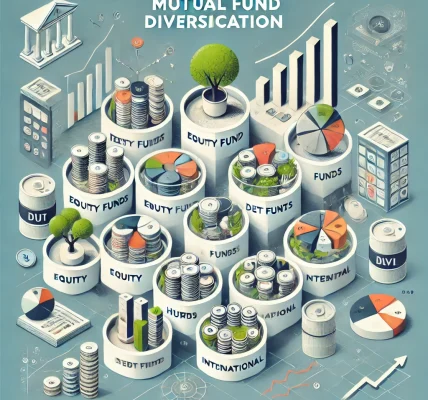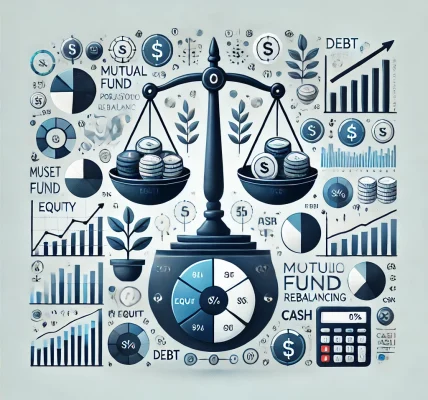Introduction
Market volatility is an inevitable aspect of investing, and mutual funds are no exception to its effects. Whether driven by economic fluctuations, geopolitical events, interest rate changes, or investor sentiment, market volatility can significantly impact mutual fund returns. While it can be unsettling for investors, understanding how market volatility affects mutual funds and adopting strategic approaches can help mitigate risks and maximize potential gains.
This comprehensive guide explores the impact of market volatility on mutual funds and actionable steps investors can take to navigate uncertain market conditions effectively.
1. Understanding Market Volatility
Market volatility refers to the fluctuations in stock prices or the overall market over a specific period. It is commonly measured by the Volatility Index (VIX), also known as the “fear gauge.” High volatility indicates larger price swings, while low volatility reflects a more stable market.
Causes of Market Volatility
- Economic Indicators – Inflation rates, GDP growth, and employment reports.
- Geopolitical Events – Wars, trade tensions, and global conflicts.
- Interest Rate Changes – Federal Reserve and central bank policies.
- Corporate Earnings Reports – Strong or weak earnings can drive market sentiment.
- Natural Disasters and Pandemics – Unexpected crises can create uncertainty in financial markets.
2. How Market Volatility Affects Mutual Funds
Market volatility influences different types of mutual funds in various ways. Understanding these effects can help investors manage expectations and align their portfolios accordingly.
Impact on Equity Mutual Funds
Equity mutual funds, which invest primarily in stocks, are highly sensitive to market volatility. When stock prices fluctuate, so do the Net Asset Values (NAVs) of these funds.
Effects:
- High volatility can lead to sharp price declines in short periods.
- Long-term investors may see opportunities to buy units at lower NAVs.
- Sectoral and thematic funds are more volatile than diversified equity funds.
Impact on Debt Mutual Funds
Debt mutual funds invest in fixed-income securities such as government bonds and corporate bonds. They are generally less volatile than equity funds but are affected by interest rate movements.
Effects:
- When interest rates rise, bond prices fall, impacting NAVs.
- Long-duration debt funds are more sensitive to rate changes than short-duration funds.
- Credit risk can increase if companies struggle in volatile markets.
Impact on Hybrid Mutual Funds
Hybrid mutual funds, which balance equities and debt instruments, experience moderate volatility. The equity portion remains exposed to stock market fluctuations, while the debt portion provides some stability.
Effects:
- Balanced funds can cushion market downturns.
- Dynamic asset allocation funds adjust portfolios based on market trends.
3. Strategies to Manage Mutual Fund Investments During Volatility
Market fluctuations are unavoidable, but investors can take strategic actions to protect and optimize their portfolios.
1. Stay Invested for the Long Term
- Market downturns are often temporary, and historically, markets have recovered over time.
- Short-term volatility should not derail long-term financial goals.
- Avoid panic-selling during market crashes, as losses are only realized when units are sold.
2. Diversify Your Mutual Fund Portfolio
- Spread investments across different asset classes, such as equity, debt, and gold funds.
- Consider international mutual funds to reduce domestic market dependency.
- Invest in multiple sectors to mitigate risks from sector-specific downturns.
3. Use Systematic Investment Plans (SIPs)
- SIP investments benefit from rupee cost averaging, allowing investors to buy more units when prices are low and fewer when prices are high.
- SIPs help maintain investment discipline regardless of market conditions.
- Ideal for reducing emotional decision-making in volatile times.
4. Maintain an Emergency Fund
- Keeping 3-6 months’ worth of expenses in liquid funds or savings accounts prevents forced withdrawals from mutual funds during downturns.
- Reduces financial stress and allows investments to grow uninterrupted.
5. Rebalance Your Portfolio Periodically
- Assess your asset allocation every 6-12 months to align with financial goals.
- Shift allocations between equity and debt funds to maintain desired risk exposure.
- Consider reducing exposure to high-risk funds if nearing financial milestones.
6. Invest in Low Volatility Funds
- Large-cap mutual funds are generally less volatile than mid-cap or small-cap funds.
- Hybrid and balanced advantage funds offer a mix of equity and debt for risk-adjusted returns.
- Index funds provide market-wide exposure with lower risk compared to actively managed funds.
7. Keep an Eye on Market Valuations
- Monitoring Price-to-Earnings (P/E) ratios and other valuation metrics can help gauge market conditions.
- Investing when markets are undervalued can lead to higher long-term gains.
- Avoid making lump sum investments in highly overvalued markets.
8. Seek Professional Financial Advice
- If uncertain, consulting a certified financial advisor can provide tailored investment strategies.
- Professional guidance can help navigate volatile markets without emotional decision-making.
4. Common Mistakes to Avoid During Market Volatility
- Panic Selling: Exiting investments in fear of losses locks in losses permanently.
- Trying to Time the Market: Predicting market highs and lows is nearly impossible.
- Overexposure to a Single Asset Class: Lack of diversification increases risk.
- Ignoring Asset Allocation: Not adjusting investments based on financial goals can lead to suboptimal returns.
- Overlooking Liquidity Needs: Investing all funds in volatile assets can create liquidity crises.
5. Conclusion: Navigating Market Volatility with Confidence
Market volatility is an inherent part of investing, and while it can be unsettling, it also presents opportunities for disciplined investors. By understanding its impact on mutual funds and implementing strategic risk management measures, investors can minimize risks and maximize returns over time.
✅ Stay invested for the long term. ✅ Use SIPs to navigate price fluctuations. ✅ Diversify across asset classes and sectors. ✅ Avoid emotional decision-making and market timing. ✅ Rebalance portfolios periodically and consult financial experts.
By following these best practices, investors can confidently ride through market ups and downs while staying on track to achieve their financial goals.
Disclaimer: This article is for informational purposes only and does not constitute financial advice. Please consult a professional financial advisor before making investment decisions.




